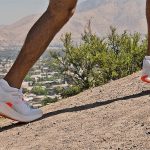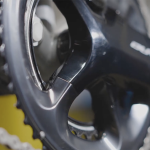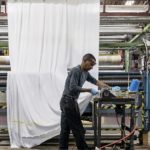You are never too old to work out and get fit. That’s the message which America’s seniors are sending to the fitness industry. While annual wholesale sales of fitness equipment have dropped off in recent years and overall health club memberships in the U.S. have been stagnant since 2007, the ‘backbone’ of the fitness industry has been older Americans those 55+. Those are some of the key findings of the Sporting Goods Manufacturers Association (SGMA), following a recent analysis of its newly released Tracking the Fitness Movement (2010 edition) study.
“From 1987 to 2007, the number of health club members in the U.S., aged 55 and older, increased by more than 500% — from 1.6 million to 9.9 million. In 2009, one in four health club members in the U.S. were at least 55 years old,” said SGMA President Tom Cove. “During that same 20-year time period, the number of health club members aged 18 to 34 rose by just 52% — from 9.0 million to 13.7 million. Without the support of America’s seniors, the fitness industry would be in rough shape.”
Today’s ‘Baby Boomers’ and senior citizens understand that maintaining good health is one of the keys to enjoying the ‘golden years’ and one of the best ways to stay healthy is to maintain your physical fitness.
Don’t Underestimate the Power of PE
Another key finding of Tracking the Fitness Movement is the impact that physical education classes have on an individual’s long-term commitment to an activity filled lifestyle.
SGMA’s research indicates that people are 3.3 times more likely to take part in team sports if they have PE in school rather than if they don’t. The likelihood of somebody taking part in outdoor activities, cycling, running/jogging, or water sports also increases if that person takes PE in school.
“Physical education is the gateway to other physical activities,” said Cove.
News and Notes
Listed below are some of the highlights of SGMA’s Tracking the Fitness Movement (2010 edition):
Dedicated Participants
Stationary cycling, stretching, and walking for fitness are the activities where there are at least twice as many ‘core’ participants as there are ‘casual’ participants. Comment:
Sales Leaders
The two fitness machine categories which generate the most sales are treadmills ($1.027 billion) and elliptical machines ($913 million). Comment:
Treadmills appeal to walkers and runners while elliptical machines are equally attractive to males and females who want a low-impact workout.
Top Five in Fitness
The five most popular fitness activities in the U.S. are walking for fitness, treadmills, running/jogging, stretching, and hand weights. Comment: Those five activities can be accessible to any fitness enthusiast from their home, 24/7.
Fittest Cities
The top five cities in the U.S. with the highest rates of ‘core’ participation in fitness activities (per capita) are San Diego, Charlotte, Miami/Fort Lauderdale, Phoenix/Prescott, and Los Angeles. Comment:
These five cities are in the ‘Sun Belt’ where the weather makes year-round exercise (indoors and outdoors) possible.
Senior Scene
Of the 8.7 million aquatic exercisers, more than 50% of the participants are at least 45 years old. Comment:
This activity is ‘easy on the joints.’
Club Appeal
Those working out at clubs enjoy networking with other professionals and, in some cases, can relieve the stress that accompanies unemployment. Comment:
A great workout can help relieve stress and allow you to make a key business contact with someone who has a similar mindset and commitment to fitness.
Home vs. Clubs
Those who work out at clubs tend to consider themselves more fit than those who work out at home. Comment:
Are some health club members motivated to work out on a more regular basis because they find the atmosphere more motivating?
The Club Scene
According to the International Health & Racquet Sports Association, 45.3 million people were members of health clubs in the U.S. in 2009. That number is expected to increase by 6.2% in 2010. Comment: Many people realize health club fees are investments in their health and not just an expense. They are worth it!
Within this report, there’s a ‘Data Bank’ which provides demographic details on fitness activities ranging from aerobics to treadmills to yoga. Within each activity, there are charts and graphs which list total participants; participation by gender; the average age of the participant; the participant’s average household income; and the participant’s average number of days of play in any given activity. Those figures are available for both total participants and ‘core’ participants. Finally, there’s an analysis of the participation based on age groups and on ‘frequent,’ ‘regular,’ and ‘casual’ play.















